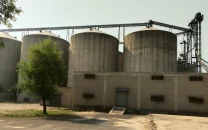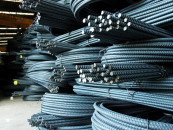The week in focus
Pakistan will not be able to recover in one year, so it may allocate resources every year to gradually reduce losses.

Pakistan will not be able to recover from the losses in one year, so it may allocate some resources every year to gradually reduce the losses. According to a suggestion, the government should set aside Rs250 billion from the budget every year to drive the economy back on the path of growth and development.
Big industry has been largely unaffected by the floods, though it cannot be denied that the textile, sugar and rice industries have been hurt because of damage to crops of cotton, sugarcane and paddy. Estimates say that floods have damaged 4.25 million acres of cultivated areas, which will lead to imports of essential commodities at higher prices.
Industry is expected to contribute generously not only to the rehabilitation and reconstruction process, but also in upcoming years when the economy should be pushed ahead on a fast track to recover the lost ground.
Of course, in order to move ahead businesses would like the government to create a facilitating environment, provide incentives to bring down the cost of doing business, diversify into new products and scout international markets.
Energy conservation
“In the immediate aftermath of the floods, the country will lose $2 billion of textile exports due to damage to the cotton crop,” MA Jabbar, former chairman of the Site Association of Trade and Industry, highlighted.
However, he said the industry should itself take some measures for bringing down the cost of manufacturing. Among other steps, he suggested energy conservation and controlling wastage of electricity and gas. This may be based on the model of the 2008 energy conservation project of textile mills, German institute GTZ, Small and Medium Enterprises Development Authority (Smeda) and a local university.
Other measures he suggested for improving the economy included better tax collection, increase in remittances, reduction in non-development expenses and more trade with Muslim countries.
High interest rate
“The State Bank should immediately cut interest rates by one percentage point, which will not only reduce the cost of doing business, but also bring down debt liabilities of the government,” suggested Anjum Nisar, former president of the Karachi Chamber of Commerce and Industry.
Elaborating, he said that the government has borrowed around Rs8 trillion from the domestic market, mainly through the sale of savings certificates. “When the interest rate comes down, it will cut the government’s interest payments by Rs80 billion.”
The State Bank, in its last monetary policy review, enhanced the benchmark policy rate by 50 basis points to 13 per cent, contrary to expectations of a cut in the rate.
Nisar said a reduction in the interest rate would also encourage domestic investors to borrow and pour money into viable projects.
Besides, a stable security situation will attract foreign investors, who will bring in investment as well as technology.
He rejected the talk of imposing a flood surcharge, terming it ‘unjustifiable’ and a trigger for more inflation.
The government can also step up efforts to strengthen regional trade, particularly between member countries of Saarc. This provides the benefit of low transportation cost because of proximity between the countries.
the writer is incharge Business desk for the Express tribune
Published in The Express Tribune, August 30th, 2010.



















COMMENTS
Comments are moderated and generally will be posted if they are on-topic and not abusive.
For more information, please see our Comments FAQ